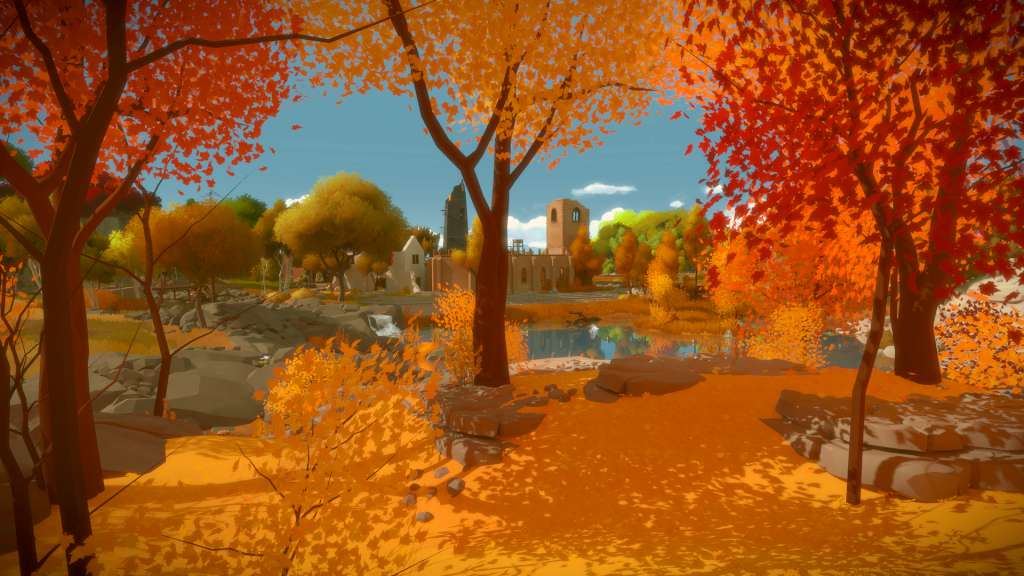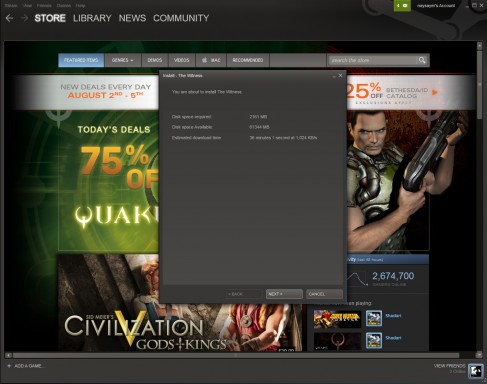

If you don’t look around a lot, you will miss things. This was especially difficult early on, when I had so much to discover. That’s a hard thing to do in a game that hides things everywhere. The tapping to move gave me motion sickness at first, until I learned not to go too far at once and not to look around too much during the auto-running. While the developers did do quite a bit to make it feel right on a touchscreen, I wish they could have done more. First off, the controls on iOS are a little fiddly. Now, despite how much I’ve enjoyed my time so far with the game, I do have some complaints. Much of the game is like that, so you do need to have patience with it. Even though that rule was always there, you won’t know it until a puzzle forces you to use it. But by the time you figure it out, you should hopefully understand another rule about those symbols and those puzzles. Sometimes it’ll give you feedback in the form of blinking, but it’s still up to you to interpret its meaning and figure out why your solutions aren’t working. For instance, there are symbols and shapes on many puzzles, but the game doesn’t tell you what they mean. Some of the most satisfying moments in the game were from staring at a puzzle for so long because it seemed impossible, then trying something I never considered before and seeing it work. You can only get so far by fudging your way through puzzles. If you solve any puzzles through trial-and-error instead of learning how they work, you’ll likely get stuck later when you have to deal with the same mechanics and don’t understand them. Solving puzzles in The Witness makes you feel smart because to do so you have to pay attention to your environment and study patterns within each puzzle. Is the game too big for its own good? Possibly, but you definitely get your money’s worth here. I’m curious what didn’t make the cut, as some did seem unnecessary, as though the developer couldn’t bear to leave them out. What’s more is that each and every puzzle teaches you something new. The game boasts over five hundred puzzles, and that’s no exaggeration. There’s so much tucked away on this island that I managed to miss an entire area near the beginning until I stumbled across it much later while looking for puzzles I hadn’t solved yet. Usually those single puzzles will unlock new areas, so the order you solve them in will determine which puzzles you see early on. However, there are also single puzzles that can be found on their own with no explanation, so you can either try to figure them out on the spot or come back later once you’ve solved easier puzzles with those same mechanics. Groupings of puzzles usually start off easier and gradually increase in difficulty as you solve more of them, so that by the time you’ve made it through a group of them you understand the rules a lot better. There’s no one else around to interact with, but there are recordings you can find and listen to. The Witness is an open world game and the puzzles are scattered about. You’ll need to stick with it a bit to see it start opening up and truly challenge you. It starts off very simple, perhaps too simple, as those first few puzzles don’t really sell the game well. Just about all the puzzles involve drawing a line from the little circle at the beginning of maze all the way to the little tail at the exit.
#The witness steam how to#
The game doesn’t give you much instruction, but it does show you how to interact with the world - tap anywhere on the ground to walk there, and tap on a puzzle to interact with it.

#The witness steam full#
You start off in a dark tunnel and make your way out to a vibrant, colorful island full and flowers and trees and lots of secrets to discover. So, even though I haven’t solved every single puzzle, I wanted to get a review in before the end of the year.
#The witness steam series#
I spent so many hours with the game and recorded the longest series of play-through videos I’ve ever done for a game, clocking in at thirty-eight videos so far. But between playing more on my iPhone than iPad and adjusting a bit the way I played, I was able to stick with it and solve over four hundred puzzles and even see one of the endings. However, I was also getting motion sickness on my iPad and almost had to stop playing altogether. But after playing more, it all became clear and I could see why this couldn’t just be a 2D game.

It seemed to be just 2D line-drawing maze puzzles in a 3D environment, and I couldn’t understand why it needed to be in 3D. I grabbed it right away because I had heard such good things about it and was eager to try it for myself. I had a bit of a rocky start with Jonathan Blow’s The Witness when it finally made its way over to iOS this year.


 0 kommentar(er)
0 kommentar(er)
